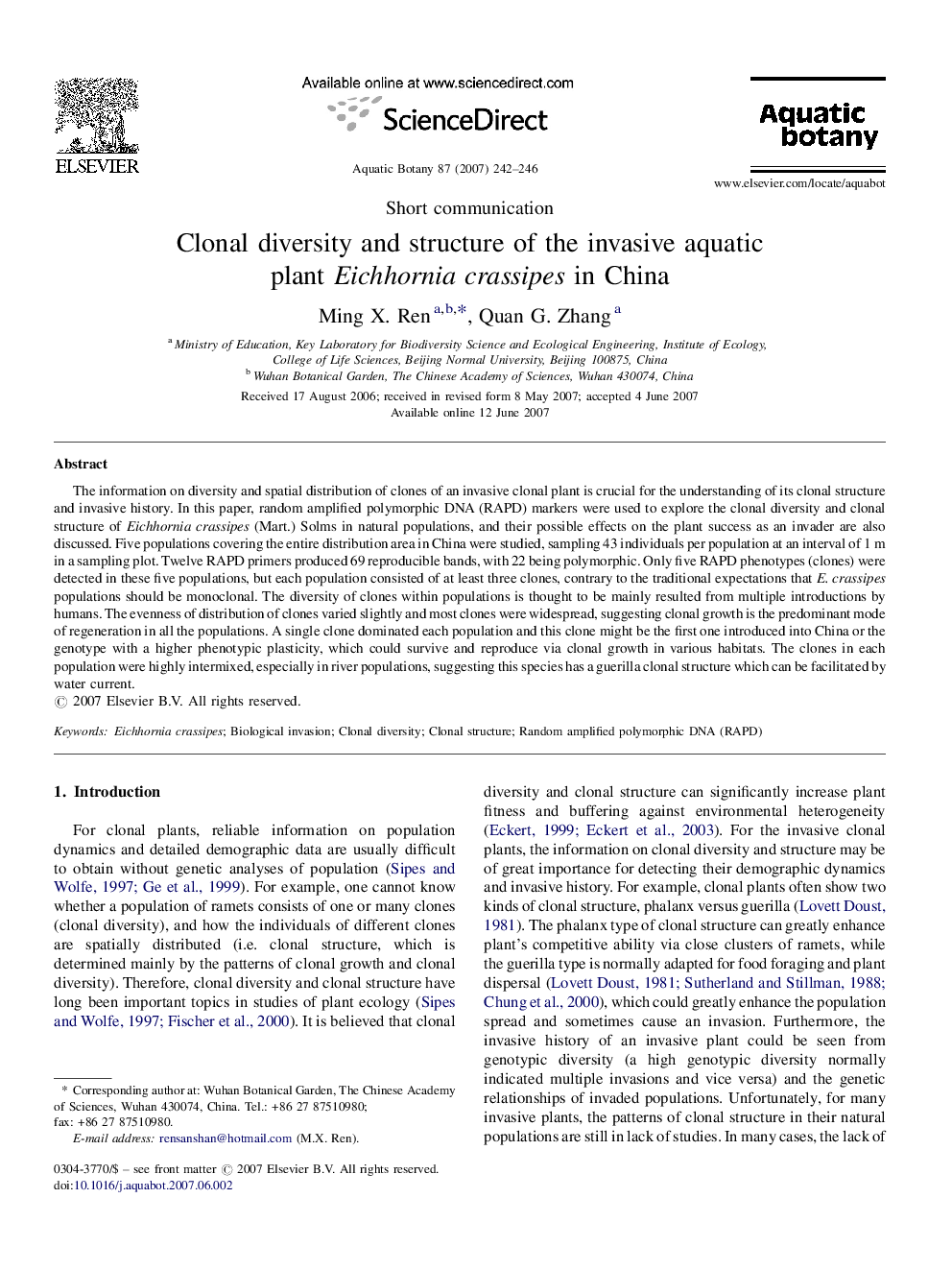| Article ID | Journal | Published Year | Pages | File Type |
|---|---|---|---|---|
| 4528725 | Aquatic Botany | 2007 | 5 Pages |
The information on diversity and spatial distribution of clones of an invasive clonal plant is crucial for the understanding of its clonal structure and invasive history. In this paper, random amplified polymorphic DNA (RAPD) markers were used to explore the clonal diversity and clonal structure of Eichhornia crassipes (Mart.) Solms in natural populations, and their possible effects on the plant success as an invader are also discussed. Five populations covering the entire distribution area in China were studied, sampling 43 individuals per population at an interval of 1 m in a sampling plot. Twelve RAPD primers produced 69 reproducible bands, with 22 being polymorphic. Only five RAPD phenotypes (clones) were detected in these five populations, but each population consisted of at least three clones, contrary to the traditional expectations that E. crassipes populations should be monoclonal. The diversity of clones within populations is thought to be mainly resulted from multiple introductions by humans. The evenness of distribution of clones varied slightly and most clones were widespread, suggesting clonal growth is the predominant mode of regeneration in all the populations. A single clone dominated each population and this clone might be the first one introduced into China or the genotype with a higher phenotypic plasticity, which could survive and reproduce via clonal growth in various habitats. The clones in each population were highly intermixed, especially in river populations, suggesting this species has a guerilla clonal structure which can be facilitated by water current.
